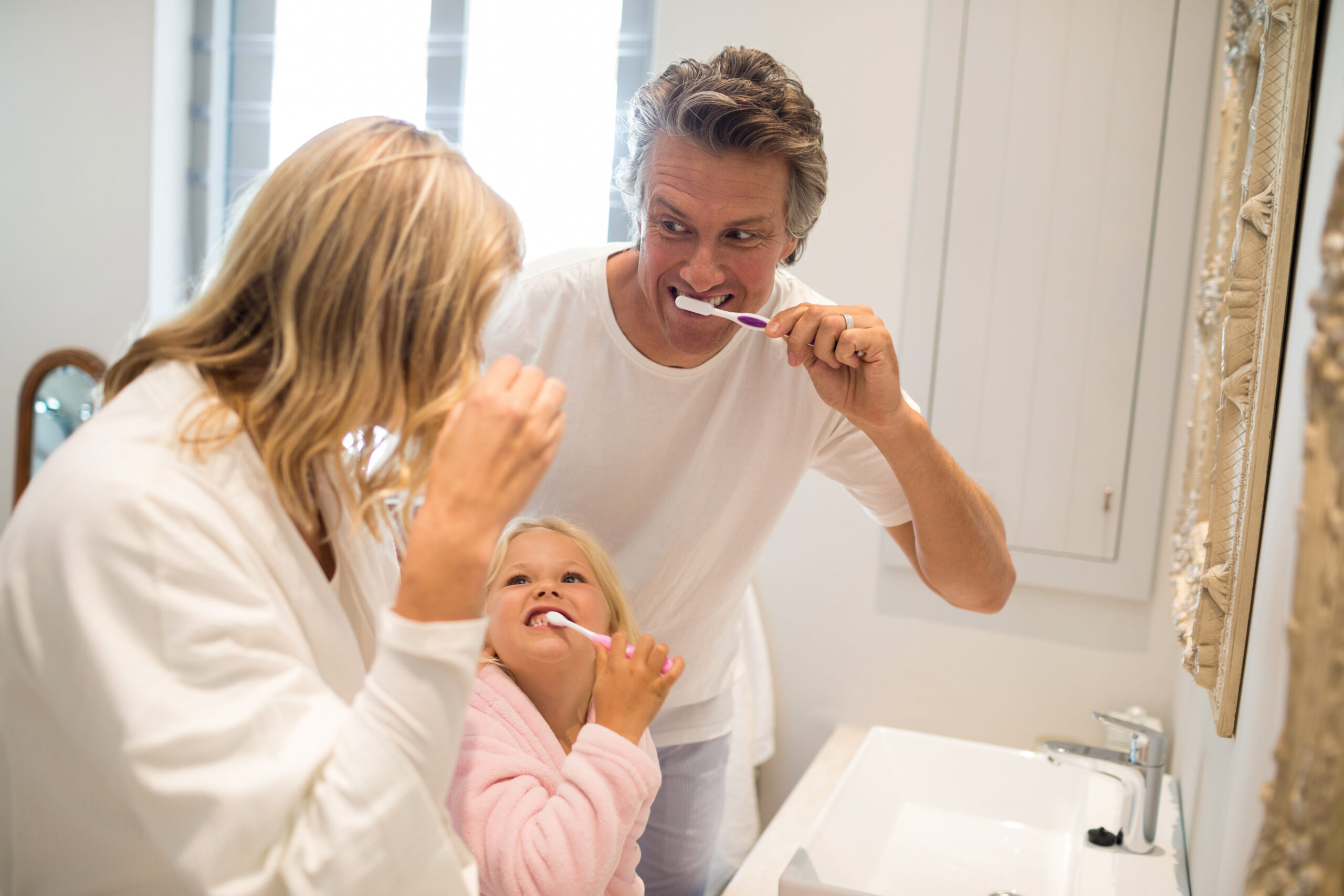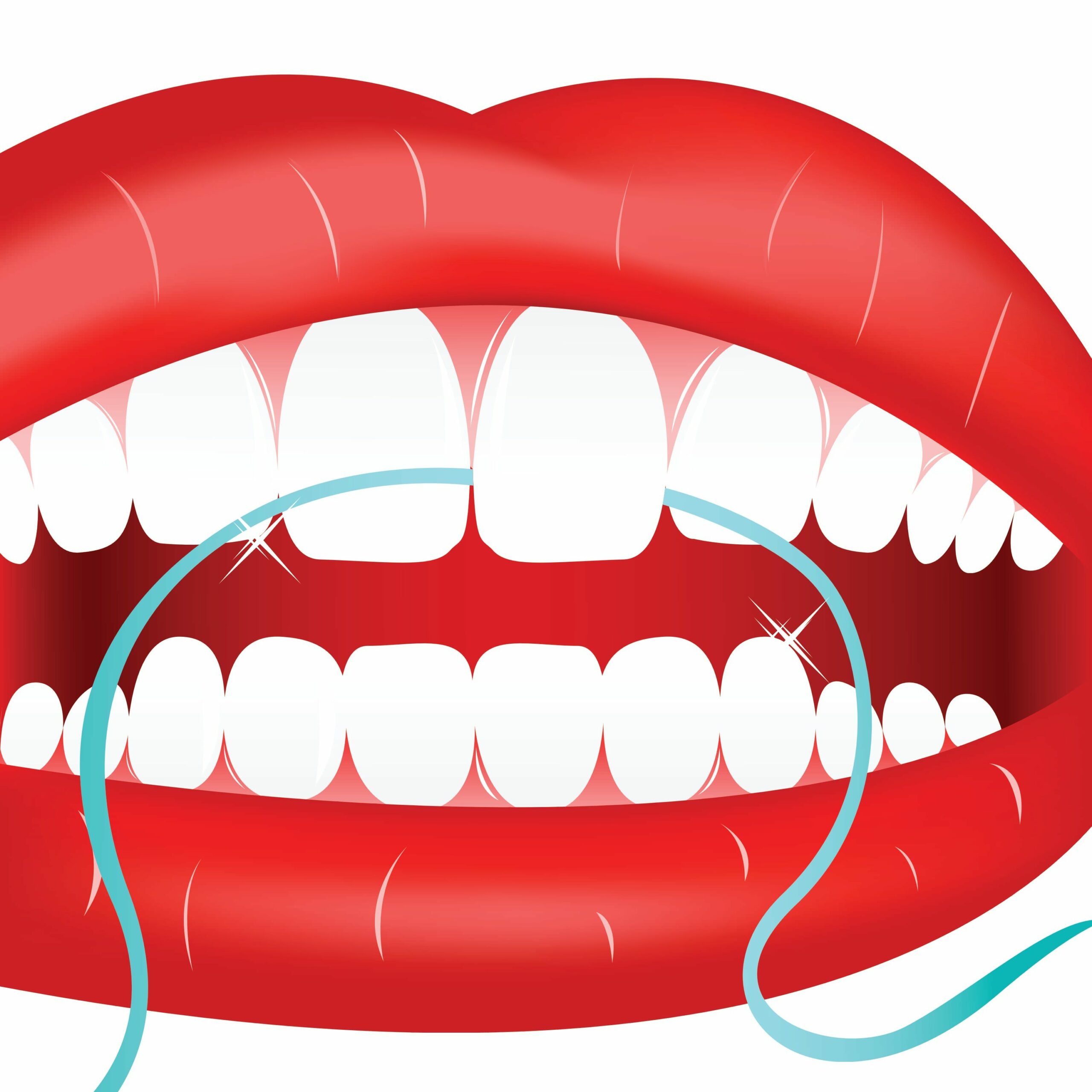Oral Hygiene
The two most important habits to understand when discussing oral hygiene are brushing and flossing. Most people engage in these activities on at least a somewhat regular basis. The fact remains that many are not practicing the correct techniques and therefore are not achieving optimal results.

Brushing
Tooth brushes should fit comfortably in the mouth, with enough reach to get to those tough to clean teeth in the back of the mouth. The American Dental Association (ADA) recommends using a soft bristled brush with a fluoride tooth paste. An electric toothbrush provides an excellent choice in equipment.
There are five surfaces on each tooth. The toothbrush can reach and clean three of these surfaces. It can reach the cheek side, the tongue side, and the biting surface of each tooth. Flossing reaches the back of each tooth, where it touches the tooth behind it, and the front of each tooth, where it touches the tooth in front of it. If you choose to only brush, you are choosing to leave two of the five tooth surfaces unclean.
Brushing technique is an underrated factor in maintaining oral hygiene. Bristles should be placed along the gum line at a slight angle of 45 degrees, and short strokes should be made in a back and forth rolling motion. Irritation of the gums should be avoided by not using hard or vigorous scrubbing motions. The tongue should be brushed as well, in order to remove odor producing bacteria.
People should be conscious of the fact that bacteria can accumulate on the tooth brush. Research has shown that there are thousands of different microbes that grow on brushes and their handles. These germs can cause issues as simple as the common cold, or as harmful as herpes cold sores and periodontal infections.
This can be avoided by rinsing the brush after cleaning the teeth and placing the brush in an upright position that will allow the tooth brush to air dry. Tooth brushes should be replaced every 3 to 4 months, depending on the condition of the bristles.
Oral Hygiene Video Education
Flossing
In order to floss properly, start with 12 to 18 inches of floss. Wrap one end snuggly around the middle finger of your recessive hand. Take the remainder of the floss and wrap it around the middle finger of your dominant hand. This frees your pointer fingers and your thumbs to create an extension to reach each tooth while simultaneously allowing you to keep tension in the floss to prevent cutting into the gum tissue.
There are two surfaces to be cleaned each time that you go between two teeth with your floss….the back of one tooth and the front of the next tooth. You are not fully flossing if you simply pop the floss in and out from between the teeth. Just like after you shower, you hug the towel to your back as you move it back and forth to dry your skin…you will want to to the same with the floss…adapting the floss to the curvatures of the teeth. Teeth are not boxes. They have many curvatures. If you are not adapting the floss to the curved tooth surface, you are not able to fully clean that surface.

The Importance of Oral Hygiene
Having poor oral hygiene is embarrassing for the person and uncomfortable for those around them as well. With all the potential health risks in the world today, those that revolve around the teeth are probably the most preventable. When a person maintains proper oral hygiene, the risks of disease and infection are greatly diminished.

